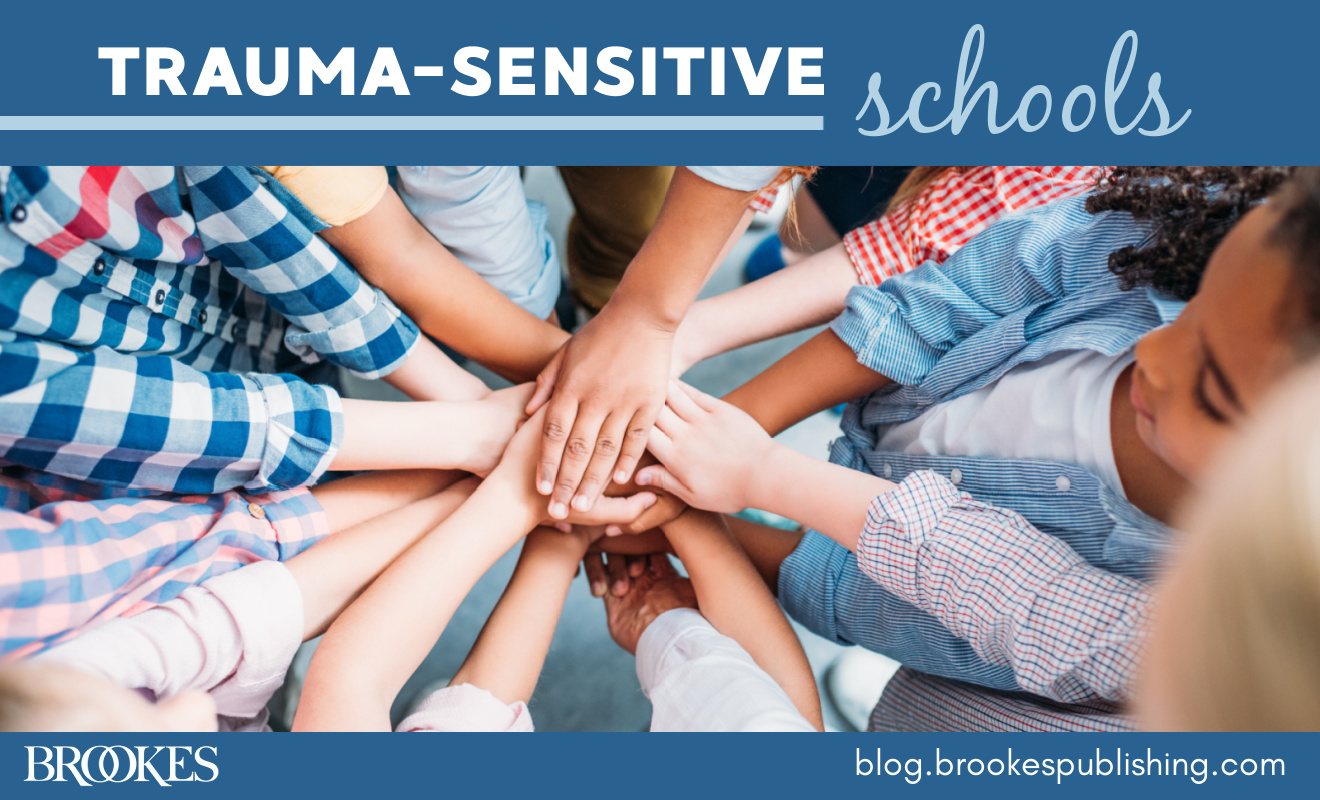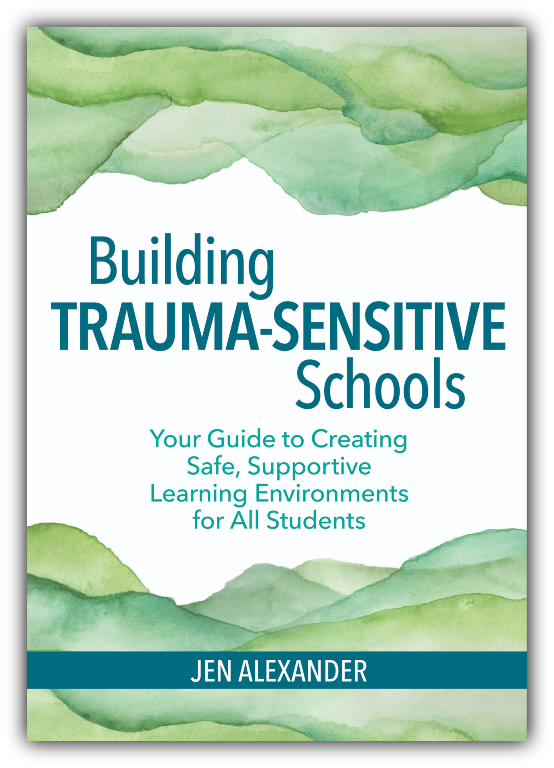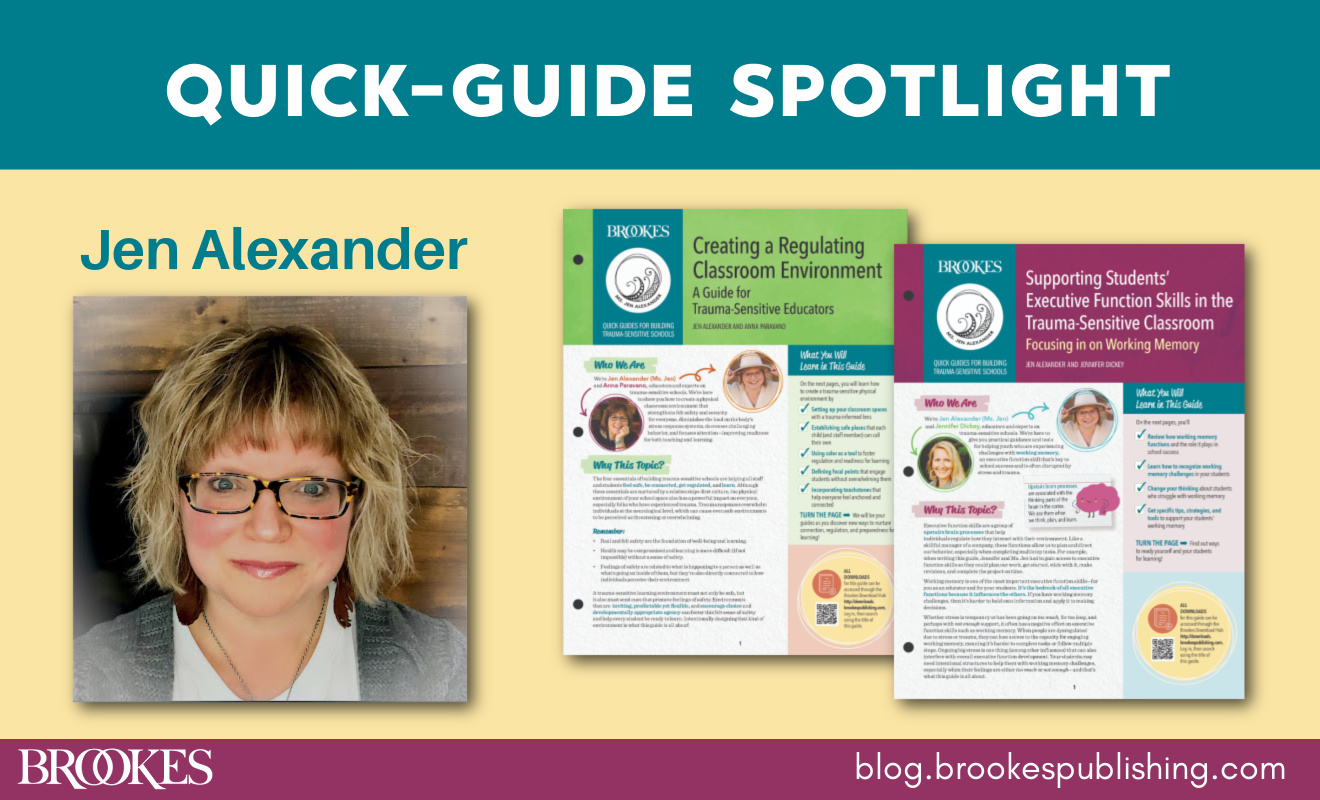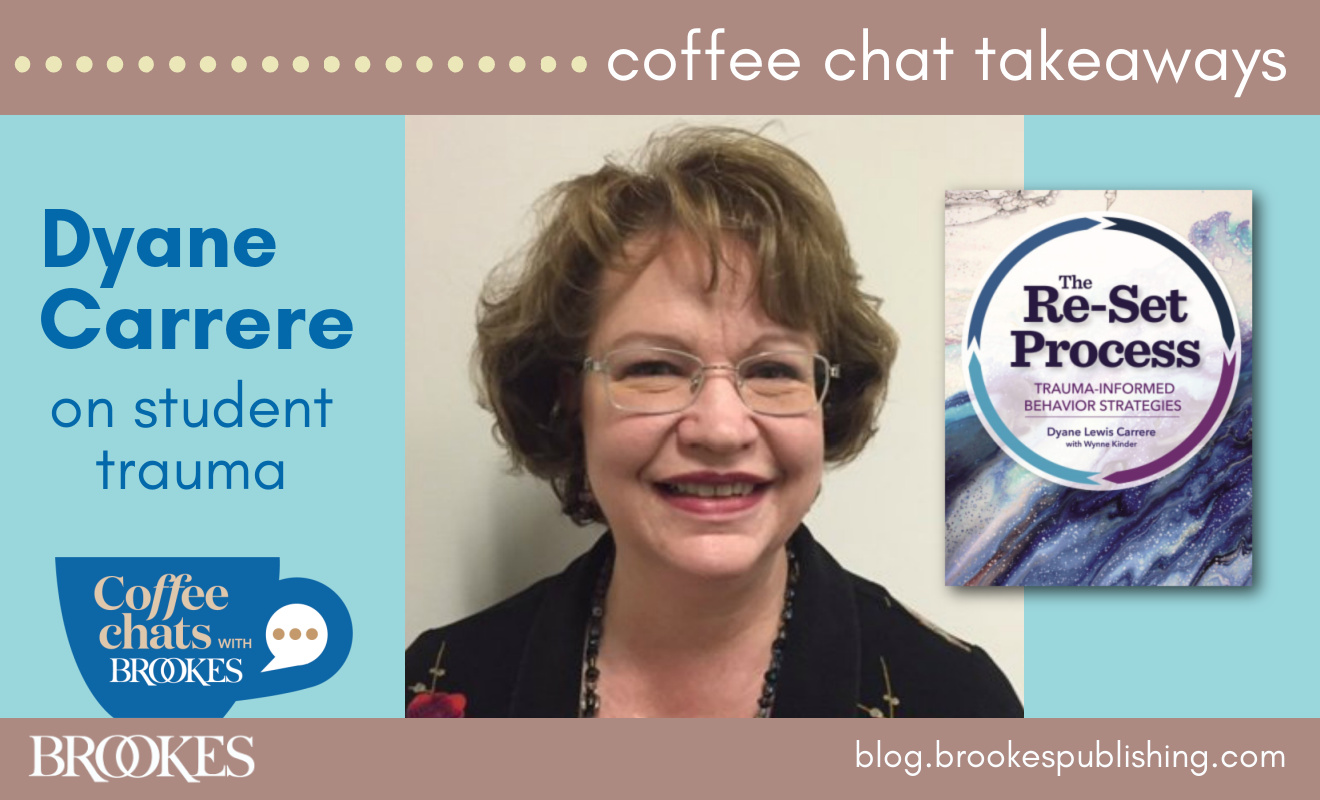5 Essential Paradigm Shifts for Trauma-Sensitive Schools
April 2, 2024
 Trauma-informed teaching practices benefit all students—safe, supportive school environments help promote both academic success and social-emotional well-being for every learner. In today’s post, excerpted and adapted from Jen Alexander’s book Building Trauma-Sensitive Schools, you’ll learn about five paradigm shifts that are key to building a trauma-sensitive school. These shifts will help you establish the mindset you need to advance Ms. Jen’s four essentials of trauma-sensitive schools: safety, connection, regulation, and learning.
Trauma-informed teaching practices benefit all students—safe, supportive school environments help promote both academic success and social-emotional well-being for every learner. In today’s post, excerpted and adapted from Jen Alexander’s book Building Trauma-Sensitive Schools, you’ll learn about five paradigm shifts that are key to building a trauma-sensitive school. These shifts will help you establish the mindset you need to advance Ms. Jen’s four essentials of trauma-sensitive schools: safety, connection, regulation, and learning.
 What happened to you? versus What’s wrong with you?
What happened to you? versus What’s wrong with you?
First, make the shift from wondering, “What’s wrong with you?” to “What happened to you?” (Bloom, 1994), followed with the question “How might I be able to help?” This is a mindset change rather than a question you would literally ask students or families in most cases. Consider the life experiences that could be affecting how a student is functioning today. By starting from curiosity, you can be open to various possibilities when it comes to understanding a student.
Most importantly, this consideration helps you approach the student from a place of reflection marked by acceptance and empathy rather than negative judgment. From there, you’ll be better positioned to intentionally and effectively choose how to help rather than react impulsively or emotionally. Any guesses you make about traumatized students and the reasons for their actions can be inaccurate if you don’t truly understand the role trauma may be playing. Assumptions can get in the way of understanding and helping students.
 Can’ts versus won’ts
Can’ts versus won’ts
The second paradigm shift begins with understanding not all youth reactions stem from won’t behaviors. Even when traumatized students appear willful or defiant, the behavior often results from what Daniel Siegel (2012, 2014) has called a can’t rather than a won’t. Many behaviors result from “downstairs brain” reactions, meaning the actions stem from activation of the child’s fight, flight, or freeze survival reflex.
Avoid viewing an action as purposeful, manipulative, or otherwise based on choice when it may result from not-yet-acquired brain functions that allow for more intentional responses. Punitive responses to downstairs-brain reactions result in missed opportunities for students to experience the safety, support, and help they need to regulate stress response systems. Because many behaviors you may see in traumatized students result from a can’t instead of a won’t, consequences and incentives often will not work—and could make things worse.
Think about a traumatized student’s escalating distress like a person being on fire. It would never work to say to that person, “If you stop screaming, I’ll give you a prize” or “If you don’t stop screaming, I’m going to take away your privileges.” What youth need is help putting out the fire. Do that and the screaming will stop. The same is true for so many of our traumatized youth.
When faced with concerns, pause and ask yourself, “Is this resulting from a can’t or a won’t?” When what you see stems from a can’t, focus on how you might help a student regulate their arousal system and learn new skills (but the learning must wait until regulation is restored).
 Needing attention versus seeking attention
Needing attention versus seeking attention
The next shift is the realization that youth who are not yet able to self-regulate need others to help them coregulate. To put it another way: they need attention. Seeking connection and help when they are needed are signs of health, but we often label students as “attention-seeking” as if it’s a bad thing. Remember that any person’s genuine need for attention is legitimate. It’s not bad to give students attention when they need it. And it’s beneficial to provide help when youth show us they are dysregulated and need our assistance.
Try planning times throughout traumatized students’ days when they receive unconditional one-to-one time with an adult who listens to them talk, plays a game with them, creates a craft, or invites them to help with a project. These planned times for receiving attention do not have to be lengthy; rather, their benefit comes from frequent consistency. It’s important that youth receive these gifts of connection no matter what—when things are going well and when they are not going well.
Be creative about who might be providing these interventions of connection. Although it is often helpful to include consistent individuals over time, anyone can be considered, including peers, cafeteria personnel, custodians, paraprofessionals, previous teachers, special area teachers, or volunteers. Take advantage of formal or informal mentoring opportunities within the school day, too.
 Time-in versus time-out
Time-in versus time-out
A distressed student who is having difficulty staying in control does not usually benefit from a “time-out” away from others. Isolation for traumatized students can be a trigger for either implicit or explicit memories linked with past neglect or abandonment and thus may be retraumatizing.
Being isolated can also contribute to escalating behaviors. For many students, including those who have been traumatized, a seclusion room can cause rapid dysregulation, even leading to screaming, raging, or self-harm. Although students may temporarily feel better after such an emotional release, there is nothing beneficial long term. In fact, it can be damaging on a neurological, emotional, and personal-social level, and dangerous because someone could get hurt. And when classmates see or hear these outbursts at school, we risk traumatizing them or triggering their own past traumas as well.
We must find ways to prevent youth from entering these states in the first place as much as possible. When—despite best efforts—a student does enter a flooded arousal state, be thoughtful about providing them with a “time-in” with a trusted adult or mentor.
 And versus or
And versus or
Although being flexible rather than rigid is critical, and having empathy for students is key, we must maintain levels of structure and supervision along with healthy limit setting. Without those things, we risk creating environments marked by chaos, which are not safe and do not feel safe for students.
This may seem like a choice between “Be understanding of everything students have been through,” or “Maintain structure and don’t be too lenient.” The word and works better to explain what we need to do to make schools trauma-sensitive. For example:
- Children and teens need connection, attunement, and
- Youth need limits, and they need limits to be given with empathy for how difficult it can be for students to accept those limits.
- Students need to know we care about them no matter what, and we may not like or accept maladaptive actions; thus, we set boundaries in regard to hurting self, others, and property, or in relation to disrupting others’ learning.
- We, as educators, need to have our own distress understood as well as validated, and it is important that we do not take our emotions out on students.
- Schools need to be trauma-sensitive and have high standards for social-emotional, behavioral, and academic growth.
This is not simply a balancing act; balance implies equals parts of different components, and that is not always what is best. Instead, welcome all facets in the amounts that are needed while recognizing that those needs will change. Sometimes, a student needs more nurturing so as not to be retraumatized by an overwhelming emotional state, but another time, the same student may be ready for more challenge.
Our paradigms have a powerful impact on our perceptions and responses. Start by noticing when you might be looking at a student from an old paradigm, and then make a conscious effort to challenge that line of thinking. Ask yourself, “How do I know that’s what is happening right now? Could there be another way to look at this? Is there a different way to approach this situation that will better help me help this student?”
References
Bloom, S. L. (1994). The sanctuary model: Developing generic inpatient programs for the treatment of psychological trauma. In M. B. Williams & J. F. Sommer (Eds.), Handbook of post-traumatic therapy: A practical guide to intervention, treatment, and research (pp. 474–491). Westport, CT: Greenwood Publishing.
Siegel, D. J. (2012a, May 2). Mindfulness and neural integration [Video file]. TEDxStudio CityED. Retrieved from https://www.youtube.com/watch?v=LiyaSr5aeho
Siegel, D. J., & Bryson, T. P. (2014). No-drama discipline: The whole-brain way to calm the chaos and nurture your child’s developing mind. New York, NY: Bantam.




Write a Comment
Your email address will not be published. Required fields are marked *
Post a Comment